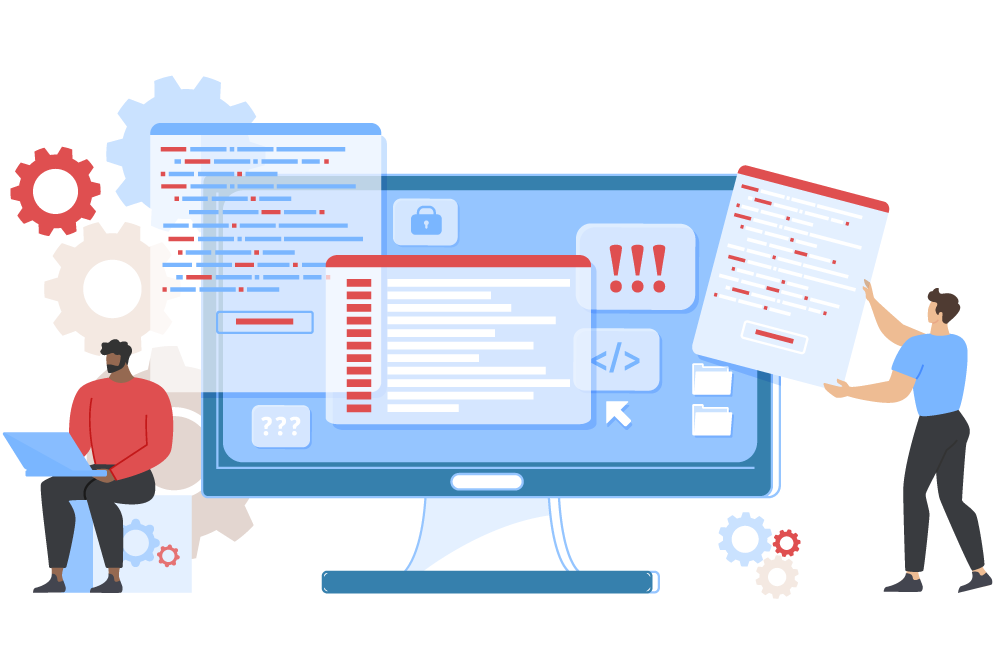Good Tips To Picking Low-Code Platform Examples
Benefits Of Low-Code Application Development In Terms Of Integration CapabilitiesLow-code app development has many benefits, especially in terms integration. This is important to create applications that effortlessly connect to systems and other services. Here are key benefits from pre-built connectors, APIs and other tools:
A Wide Variety of Connectors The Low-code software typically includes the prebuilt connectors for popular enterprise software (e.g. CRMs, databases ERPs, cloud services, etc.). This makes it easier to integrate with systems.
API Integration: A lot of low-code platforms include out-of the-box integration API capabilities which allow developers to connect easily with external data sources and services.
Easy to use
Drag-and-Drop Integration: A variety of integration tasks can be completed with drag-and-drop interfaces. This lets developers and nondevelopers to create complicated integrations with minimal or no code.
Visual Workflow Builders Visual tools to design workflows and data flows aid in understanding and setting up integrations more easily.
Standardized Integration Methods:
SOAP/RESTful Service Support: Standard web services protocols, like SOAP/REST, facilitate the integration of various different systems and applications.
OData and various Standards Standards that support them like OData permits the easy access and manipulation of data across different platforms and programs.
Real-Time Data Synchronization:
Low-code platforms permit real-time integrations between systems and applications. This allows data to be kept up-to-date and consistent in all areas of the company.
Event-Driven Architecture: Certain platforms support event-driven architectures, which allow applications to react to events in real time, which is essential for dynamic and interactive applications.
Legacy System Integration:
Low-code platforms offer a variety of tools for integrating with legacy systems. They let organizations modernize IT without having to overhaul their existing systems.
Data Migration Tools: Built-in data migration tools facilitate the transfer of data from older systems to new software built using low-code platforms.
Third-Party Services Integration:
Cloud Services: Integration with cloud services such as AWS Azure and Google Cloud allows easy deployment and scaling.
Business Applications Integration: Lowcode platforms can be used to integrate various business applications, such as Salesforce, SAP, Microsoft Dynamics etc. to create a seamless workflow that spans different functions of business.
Simplified management of data:
Unified Data Models A few low-code platforms offer unification of data models which make it easier to manage data management and integration across multiple systems.
Data Connectors - Connectors pre-configured to provide easy access to, and manipulation of, data from various sources.
Security and Compliance
Low-code platforms make sure that integrations meet security standards and protocols and safeguarding data while it is in transit and while it is in its rest.
Features for Compliance - These platforms have features to ensure that integrations are compatible to regulatory requirements.
Extensibility:
Custom Code and Scripts: Low-code platforms can often be able to support more complex integrations by allowing the inclusion of scripts and custom codes. This allows for flexibility without compromising ease of usage.
Plug-in Ecosystem A collection of plugins and extensions can further extend the integration capabilities and allow users to add new functions as needed.
Overall, the low-code platform's integration capabilities can be a very effective tool for developing interconnected apps that are scalable and efficient. They simplify the process of connecting disparate system, improve data flow, and permit businesses to adopt innovative technologies while also leveraging existing ones. See the top Low-code Platform for application development blog for website advice including rad development, stored sql procedures, rapid applications, rapid action development, app modernisation, cross platform mobile app development, push notifications android, sso azure, rapid applications, mobile app development platforms and more.

Benefits Of Low Code Application Development For Governance And Security
Low-code applications offer several benefits in terms of cybersecurity and governance, which is crucial to ensure that all applications are well-managed, managed and in compliance throughout their livescycle. Here are a few of the most important benefits:
Unified Manage Console: Lowcode platforms typically provide a management console allowing administrators to supervise and manage applications.
Role-Based Access Control RBAC : These platforms typically include roles-based access controls, which permit administrators to define and enforce rules. Only authorized users will be able to access and modify specific areas of an application.
Compliance and Regulatory Application:
Many low-code platforms have built-in security features for compliance. They are designed to meet industry standards and regulations, like GDPR or HIPAA. They have frameworks and tools that help to ensure the applications are compliant with these standards.
Audit Trails and Logging: Complete logging, audit trails, and logs are often integrated into organizations that allow them to keep track of changes and monitor access. They can also ensure compliance of both external and internal rules and regulations.
Increase Security Measures
Data Encryption. Low-code platforms offer encryption that is built into data at rest as well as while it's being transferred, which ensures sensitive information is protected.
Security Certifications: A lot of low-code providers have security certifications (e.g., ISO 27001, SOC 2) that demonstrate adherence to high security standards, providing extra security for users.
Automated updates to ensure security:
Regular Patching and Updates Low-code platforms generally handle patches and security updates automatically, making sure applications are protected against the most recent threats, without the need for the intervention of developers.
Security Monitoring Tools: These instruments send alerts in real-time and insight into potential security problems.
Data Governance
Data Access Policies: These platforms help organizations determine and implement their data access policies to ensure that only authorized users are able to access the data and that it's properly used.
Data Masking and Anonymization: Built-in tools for data masking and anonymization protect sensitive information, especially in the testing and development environment.
Consistent Lifecycle Management of Applications:
Pipelines for deployment and development Low code platforms have integrated pipelines for development and deployment that contain security tests. They ensure security is maintained through the entire life cycle of an application.
Version Control: Integrated version control allows for the management of changes and ensures that any modifications to the application are tracked and reverted if necessary while ensuring the integrity of the application.
User authentication:
Single Sign On (SSO) Single Sign On (SSO): Supporting single sign-on and other advanced authentication techniques simplifies user management while enhancing security.
Multi-Factor Authentication – Many platforms are equipped with built-in functionality for multi-factor verification and provide an additional layer of security.
Policy Enforcement and Compliance Monitoring:
Policy Templates: Low-code platforms typically have templates for security and governance which allow companies to swiftly adopt policies.
Compliance Monitoring Tools - These instruments allow for continuous monitoring of compliance status and provide reporting, making it easy to identify and resolve any issues that might arise.
Integration with Existing Security Infrastructure
Seamless Integration: Low-code platforms are designed to integrate seamlessly with existing security infrastructure and tools, including identity management solutions and SIEMs (Security Information and Event Management Solutions), and firewalls.
API Security API Security: Built-in API security features ensure that integrations with external systems are secure, securing information and ensuring the integrity of the application.
Best Practices and Training:
Best practices guides: A lot of platforms have guidelines and suggested practices for the development of secure applications. They assist non-developers in meeting security standards.
Security Training Some low-code companies offer security training and resources to users to teach them how to create and maintain secure applications.
Overall, the application's governance and security features ensure that applications will be built and managed securely and in accordance with regulations and in control. These platforms offer the frameworks and tools necessary to protect sensitive information as well as enforce policies and ensure compliance with regulations while reducing management and oversight. Follow the recommended Enterprise application development with Low-code Platform advice for blog tips including mobile app development platforms, paas service, rad development, build with docker, software for app development, mobile development platforms, low code development platforms, low code development platforms, application modernization, cloud software applications and more.

Regarding Support From Vendors And Community Involvement, Low-Code Development Has Many Advantages.
Low-code development platforms for applications can be a fantastic option to obtain vendor support and community participation. Both of these aspects are crucial to ensure an effective implementation and continuous maintenance of the application. Here are some of the main advantages.
Comprehensive Technical Support:
Support Teams: Several Low-Code platforms have a an experienced support team that can help with technical issues, advice and troubleshooting.
24/7 Support Available: Certain companies provide 24/7 support, which is particularly beneficial for companies that are global and operate in different time zones.
Training and Onboarding:
Vendors will often offer organized programs for users, such as tutorials and webinars. They may also provide certificates.
Personalized Onboarding: A lot of vendors provide personalized onboarding services to help new customers use the platform effectively and tailor it to their particular requirements.
Regular updates and enhancements
Continuous improvement: Low-code platform providers typically release regular updates which include new features, performance improvements as well as security patches, ensuring that the platform stays modern and safe.
Feedback integration: Vendors often integrate user feedback during their development process to make sure the platform meets the evolving demands of their users.
Comprehensive Documentation:
Documentation is detailed and users have the ability to access a large and well-organized documents, ranging in complexity from simple modification to advanced.
API References API documentation contains complete API references that can help developers integrate their low-code platform applications with other platforms.
Consulting and Professional Services
Expert Consultation : Vendors provide consultancy services, including architecture design and complex implementations. They do this to ensure that users can take full advantage of the platform.
Custom Development: Certain vendors provide services that permit them to develop specific features, or incorporate systems that aren't offered from the beginning.
Community Support
Active User Groups:
Discussion boards and forums: Many low code platforms have active online communities that allow users to discuss issues, share solutions and work together on best practices.
Local and virtual User Groups: These groups give you the chance to network, learn and share experiences.
Knowledge Sharing and collaboration:
Community-Contributed Resources: Users often share templates, modules, and extensions that they have developed, which can be reused or adapted by others, accelerating development and innovation.
Crowdsourced Problem-Solving: The collective expertise and experience of a group can be an extremely valuable source to solve problems and find creative solutions for complicated problems.
Learning and development:
Community-led Training: A lot of groups hold workshops, training sessions, and webinars. These are usually led by experienced users, who offer practical insight and advanced techniques.
Online Tutorials and Courses Community members develop and provide tutorials, online classes and how-to guides. This enhances the learning tools that are available to users.
Feedback and Influence
Product Feedback: Many forums have channels for giving feedback to the vendors. This could influence the development of the development of new features and enhancements.
Beta Testing members of active communities may have an opportunity to participate. This gives them early access to the platform and participate in the creation of the platform.
Recognition and Encouragement
Many vendors have communities recognition programs for example MVP programs (Most Valuable Professional) that recognize the contributions of members who are active in their respective communities.
Peer Support Peer Support: Community members frequently offer support to peers by sharing their expertise and offering advice for those who aren't as skilled. This helps create a more collaborative, supportive environment.
Overall, a strong vendor's support and a vibrant, active community provide a comprehensive support system for low-code development. Users will have the ability to gain access to the experts, resources and collaboration opportunities they need in order to develop and deploy, manage, and enhance their applications.
